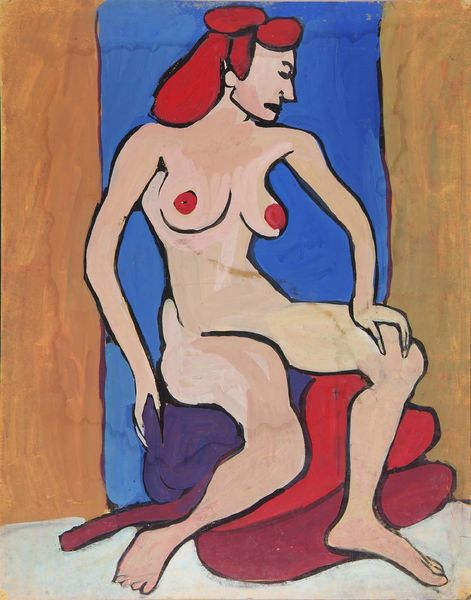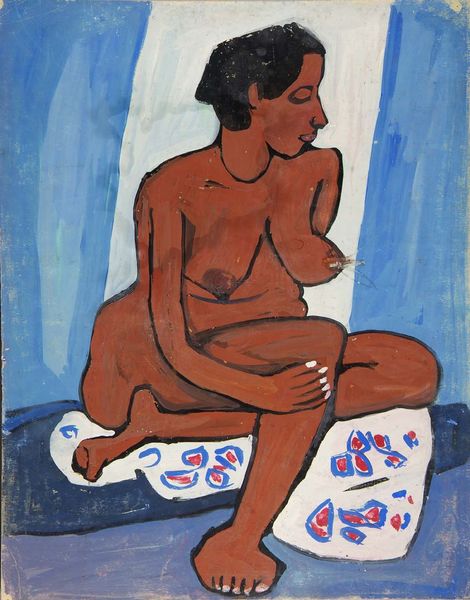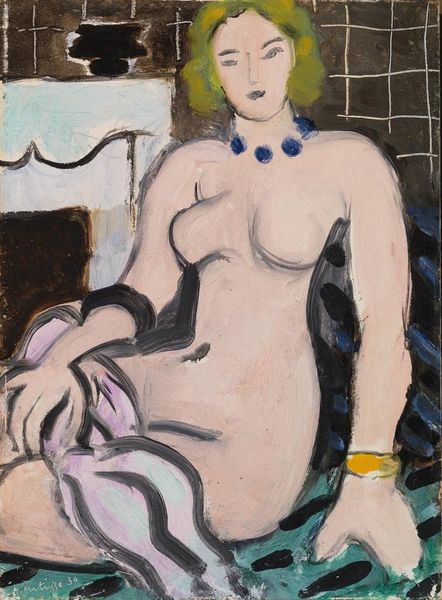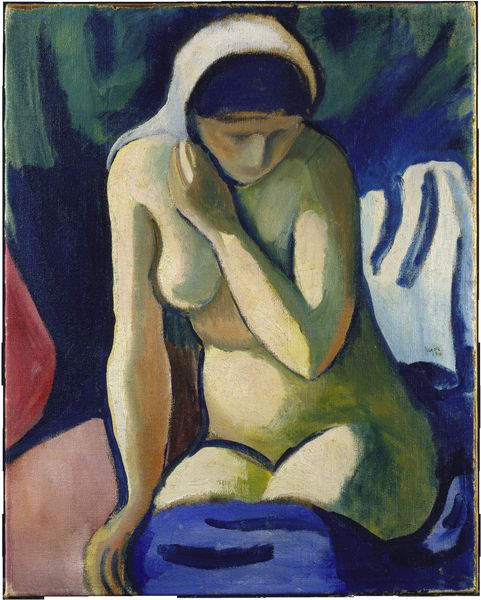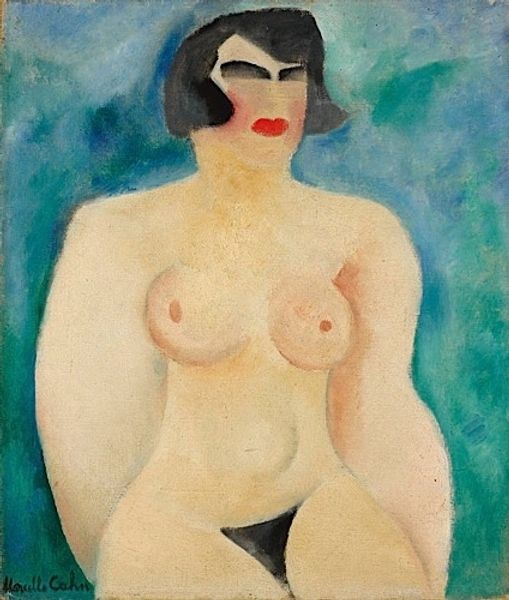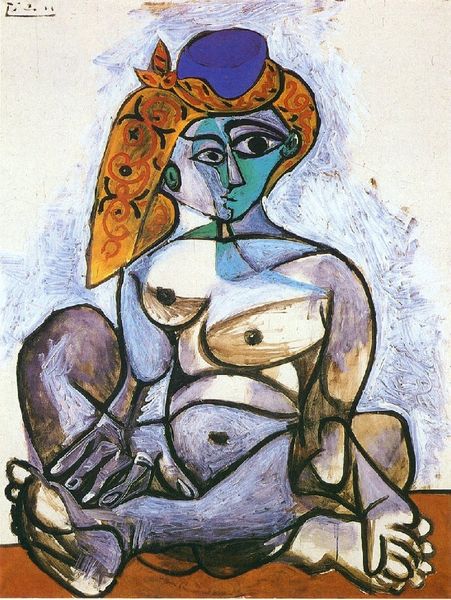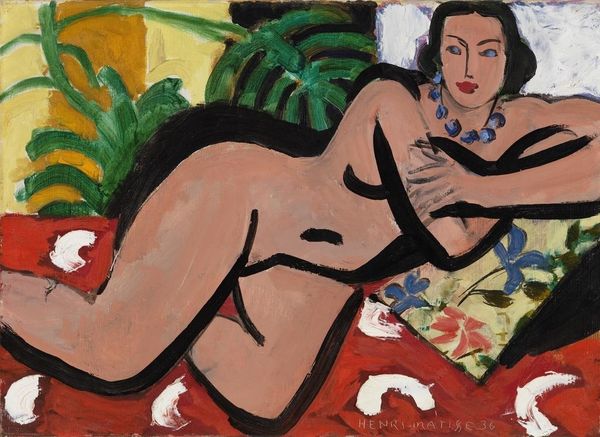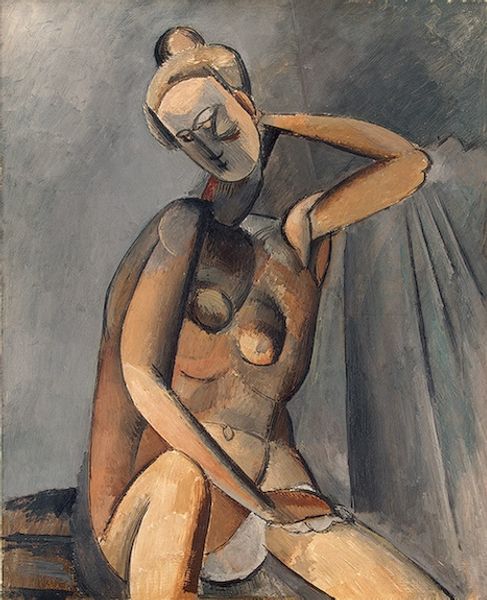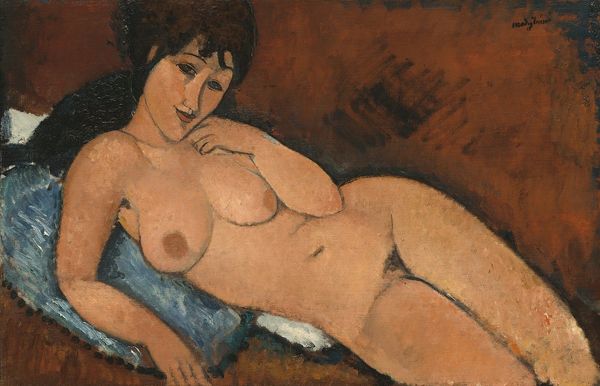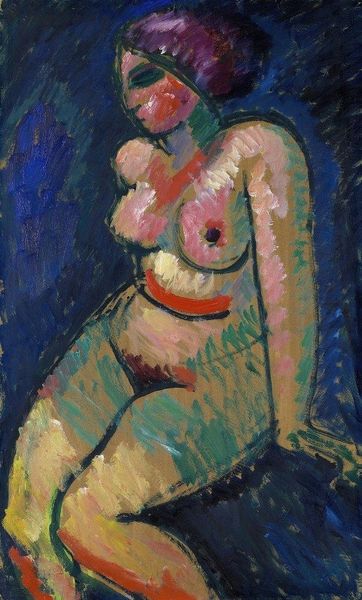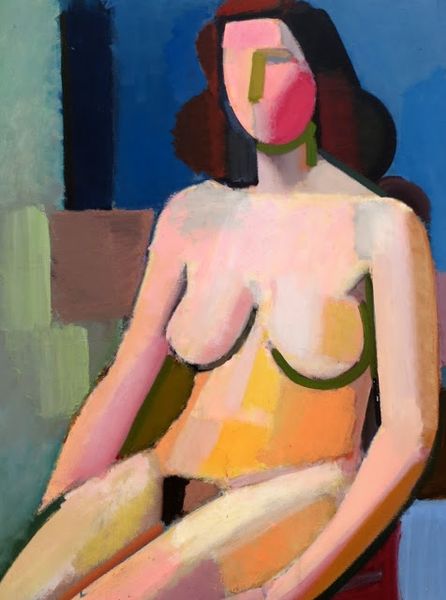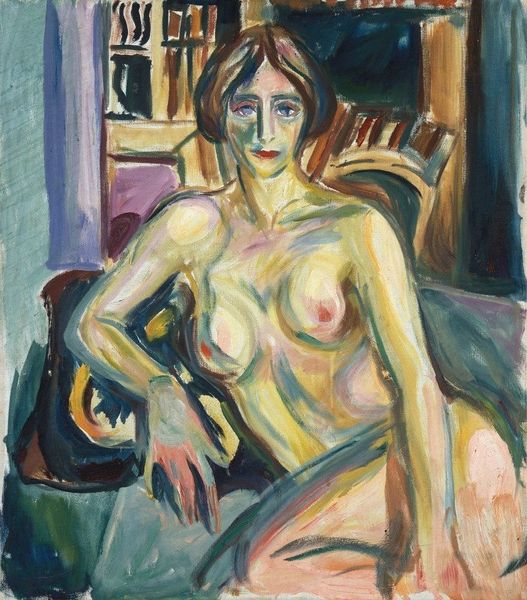
painting, oil-paint
#
portrait
#
painting
#
oil-paint
#
caricature
#
harlem-renaissance
#
figuration
#
abstraction
#
nude
#
portrait art
Copyright: William H. Johnson,Fair Use
Editor: Here we have William H. Johnson's "Seated Female Nude" from 1940, made with oil paint. It’s quite striking, with its bold outlines and flattened forms. The colors are so vibrant. What strikes you most about it? Curator: For me, it's the materiality of the paint itself. Notice how Johnson doesn’t try to disguise the application. You can see the brushstrokes, the texture. This reminds us that the artwork is, fundamentally, about labor and process, rather than just an illusion of reality. It’s almost confrontational in its honesty about the making of the work. Does it change your impression to consider how consciously Johnson emphasizes the physical construction? Editor: Absolutely! I was focusing on the figure, but now I see the painting *as* painting more clearly. The thick paint application contributes to its almost folk-art quality, which is interesting considering Johnson’s connection to the Harlem Renaissance. Do you think the apparent simplicity downplays or reinforces the artistic choices and effort that went into this? Curator: It's deceptive, isn't it? We might be tempted to see naivete, but the deliberate choices in color and composition, along with the emphasis on the physicality of the paint, reveal a highly sophisticated approach. It's a calculated move to both embrace and critique traditional notions of artistic skill and labor. How do you feel the context of the Harlem Renaissance shaped Johnson's decision to embrace a more 'primitive' style? Editor: That’s a great point. Given the social and political context, maybe it was a deliberate choice to move away from European artistic conventions and create something that spoke more directly to the Black experience. So the *how* of making the artwork becomes inherently political, in a way? Curator: Precisely! The means of production – the materials, the technique, the artist's hand – all become active agents in shaping meaning. Looking closely at the visible labor, one can discern both an embracing of African American folk traditions, and a sharp, subtly critical commentary on the prevailing art world and the modes of artistic expression deemed acceptable. Editor: This makes me think about other works by Johnson and how this ties into his larger body of work. Thanks! Curator: A valuable reminder that focusing on the materiality opens doors to richer understandings.
Comments
No comments
Be the first to comment and join the conversation on the ultimate creative platform.
